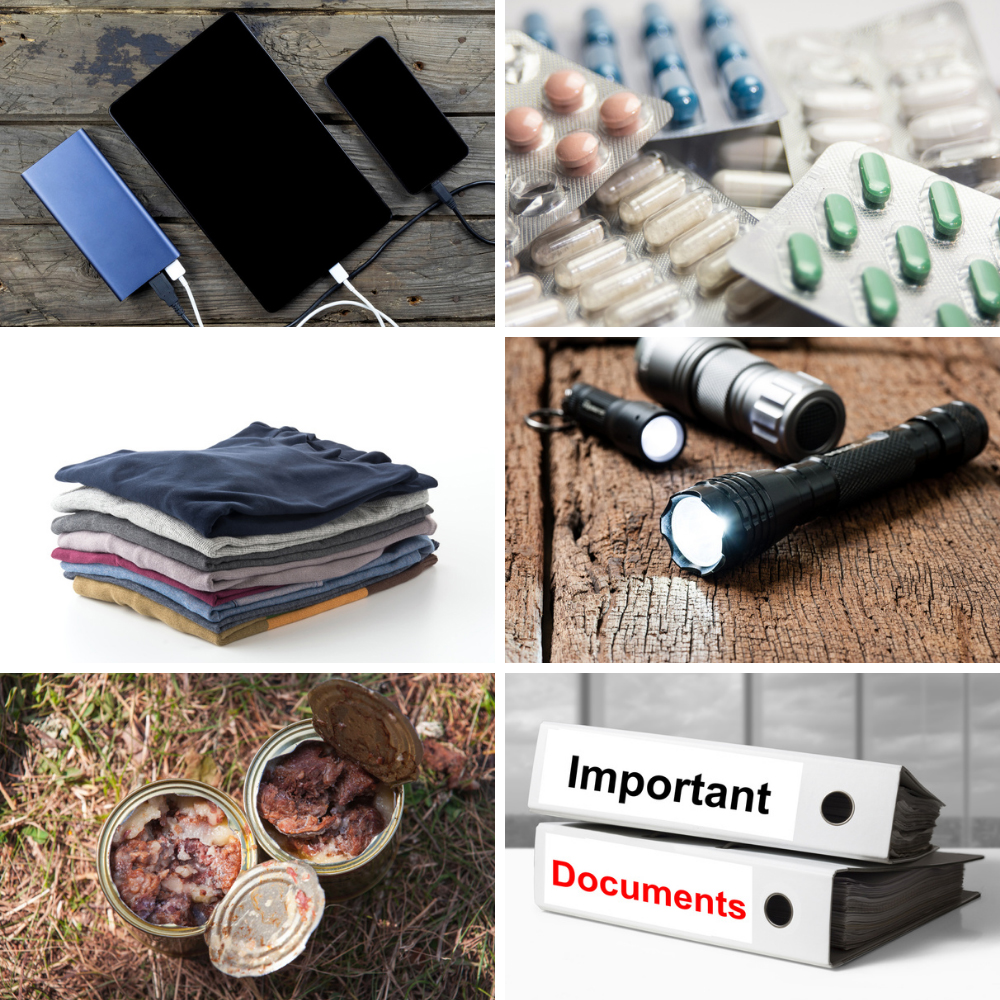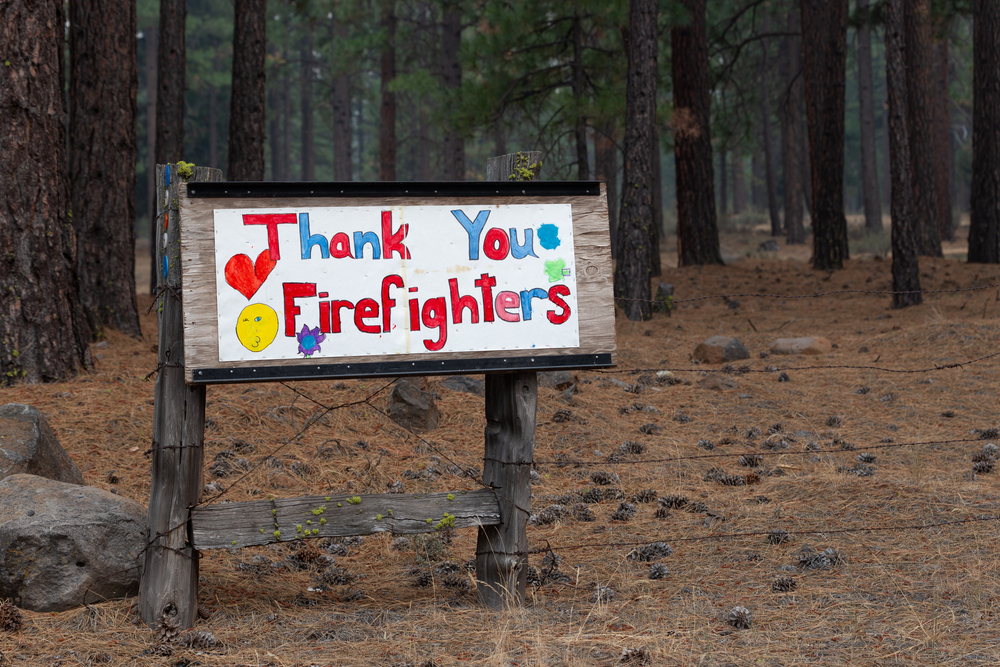The California wildfires may easily get out of hand. How prepared are you if that happens? Plan ahead and keep the family safe with our wildfire preparedness kit and checklist below!
How to Build Your Wildfire Preparedness Kit
Fleeing a wildfire can be a terrifying experience, and you don’t want to wait until the last minute to get ready for evacuation. In fact, you may want to evacuate before being told to do so by authorities, if you feel that your property is threatened or if you have pets or livestock that will make evacuation difficult.
Be methodical in your preparation and packing, and place everything that you’ll need in arm’s reach so that you’re not scrambling at the last minute. Print out our wildfire preparedness checklist and follow each line item so that you don’t forget anything important.
Your Bug Out Bag

You’ll want to pack a Bug Out Bag for each member of your family and keep it by the front door. Plan to be away from your home for a while when you pack it.
- Face masks or coverings
- A 3-day supply of non-perishable food and water for each person
- Physical map marked with at least two evacuation routes
- Prescriptions medications and a basic first aid kit
- Clothing
- Eyeglasses and/or contact lenses
- Your extra set of car keys
- Cash & credit cards
- Flashlight, Headlamp if you have one
- Battery-powered radio with extra batteries
- Toiletries: toilet paper, wipes, hand sanitizer, toothbrush, toothpaste, soap
- Copies of important documents, including birth certificates, passports, and insurance policies
- Pet food and water
- Small valuables you don’t want to leave behind, such as wedding rings
- Photos and other items that cannot be replaced
- Personal computer information on hard drives and disks, your laptop
- Chargers for cell phones, laptops, etc.
- A list of emergency contact numbers
Whenever you leave the house, bring your Bug Out Bag with you, just in case you will not be able to return home to pick it up. It is also a good idea to keep a cooler on wheels accessible to you. You can quickly fill it up with food and drinks as you’re leaving.
Evacuation Checklist
Before you leave your home, you’ll want to put in a little effort to come back to a liveable space if you’re able to do so. There are steps to take both inside and outside of your house. You’ll also want to contact your insurance agent immediately, since they may cover your lodging and other evacuation expenses.
1. Inside Your House
- Have your Bug Out Bag ready to go.
- Keep a Bug Out Bag of learning materials for your children so you can reestablish structure for them.
- Have a family plan prepared ahead of time, and communicate it with your family prior to evacuation.
- Know your community’s emergency response plan, and know your own plan on where to go when it is time to evacuate. Have multiple routes ready for leaving your location.
- Shut all windows and doors, leaving them unlocked. Wrap your A/C units to help reduce smoke damage.
- Remove all flammable window shades and curtains.
- Close metal shutters.
- Move flammable furniture to the center of the room, away from windows and doors.
- Shut off gas at the meter and turn off the pilot lights.
- Leave your lights on so firefighters can see your house under smoky conditions.
- Shut off the air conditioning.
- Walk through your home and take a video, talking through everything you have, including in drawers and closets.
- Throw away everything in the fridge and freezer that you’re not taking with you, and take the trash outside. Your power will likely be turned off, and this way you won’t return to the stench.
- Keep pets inside and close by so that you can evacuate them quickly.
2. Outside Your House
- Fill up the gas tank of your car to at least ¾ full and maintain that level until all fires are extinguished.
- Gather up flammable items from outside the house and bring them inside (patio furniture, children’s toys, doormats, trash cans, etc.) or put them in your pool.
- Turn off propane tanks.
- Move propane BBQ appliances away from home and any other buildings.
- Connect hoses to outside water valves or spigots for use by firefighters. Fill water buckets and place them around the house.
- Don’t leave sprinklers on or water running, as they can affect critical water pressure.
- Leave exterior lights on so your home is visible to firefighters.
- Put your Bug Out Bag in your vehicle.
- Keep your car windows and doors shut, and keep the keys in your pocket at all times.
- Place a ladder at the corner of the house for firefighters to use to access your roof.
- Seal attic and ground vents with plywood or commercial seals.
- Continue to monitor the situation. Don’t wait for an evacuation order if you feel threatened. Leaving early will also help to keep you out of traffic.
- If you have livestock, keep them nearby and evacuate early with them.
Be Prepared with a Wildfire Preparedness Kit and Checklist

Don’t return to your home until it has been determined that it is safe to do so. When you do get home, don’t sweep or blow the ash, as it can create toxins in the air. Instead, wet the ash with a hose or wet towel. Be sure to replace all of the filters in your home and car.
Stay as calm as you can, and begin your preparations early so that you’re not scrambling at the last minute.
How are you preparing for the wildfires right now? We’d love to hear some tips from you in the comments section!
Up Next:
- 10 Medications To Stock In Your Bug Out Bag
- How To Prepare For and Evacuate From A Wildfire
- How To Turn Your Bug Out Bag Into A Minimalist Backpack


